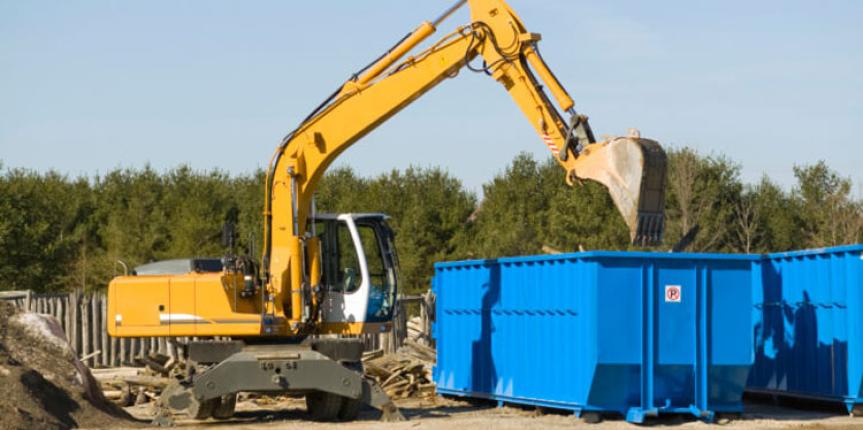
Construction projects require a lot of tactical and technical work, but an abundance of such work revolves around the construction trash containers, what are they? What are the types of construction dumpsters? Exactly what is a dumpster? All such questions will be answered shortly and discuss the construction of trash containers or construction waste containers. So, without further ado, let’s dive into the unorthodox world of construction garbage containers (metaphorically, of course).
What is a Dumpster?
To start off, we need to familiarize ourselves with the basics, so what exactly is a construction dumpster? Or, as many call it, construction trash containers. In simple terms, construction waste dumpsters or construction trash dumpsters are yarded waste removal devices that are mostly used during landscaping projects. There are many types of dumpsters available for use that are also actively used in the construction industry till date, which we will discuss in detail.
These construction disposal containers are used dumpsters in mostly the landscaping world. It is very important to discuss the different types of dumpsters, what dumpster is used for, how each dumpster is different from the other etc. With that being said, let’s get started.
Different Types of Construction Dumpster in the Construction Project
During this, we will look at five particular construction waste dumpster or construction waste bins and look at their unique characteristics and distinctions from other construction waste bins.
1. Construction Debris Dumpster
These construction disposal containers are the most commonly rented small construction dumpster truck and are majorly used for large NYC construction projects. These are offered in the sizes, 10,20,30,40-yard sizes as of any other construction waste containers. These construction garbage containers can hold a variety of mixed waste, this feature makes these used dumpsters more feasible for renovations, new construction, or demolition projects.
Many other dumpster types will follow. Their sizes, however, can also make for glorious small construction dumpsters. Due to their varying size, these construction trash dumpsters are used for larger projects than just commercial construction waste management such as; garage, basement, or attic cleaning. These dumpster types really have revolutionized modern construction work and made it a whole lot easier.
2. Self-Contained Compactors
This variety of garbage construction dumpster is an excellent way of managing construction projects. The best feature of this garbage construction dumpster is its ability to compress any form of waste and reduce its size through compaction.
The best of its kind is fitted with hydraulic dumpsters, security chutes, and many other high-tech instruments. This type of construction waste dumpster also comes as different types of dumpsters in that there are versions that are used to dispose of wet, lightweight, and granulated materials.
3. Yard Construction Debris Containers
This type of construction garbage bin is also excellent for landscaping and commercial construction. These yard debris containers, just like the debris dumpsters, come in different sizes. However, it is worth noting that such containers are mostly for large-scale construction projects only. A salient feature of this type of dumpster is that if not used for commercial construction or landscaping, it can also be used as a debris dumpster to clear out a particular area that is going to be reserved for construction.
4. Heavy Debris Dumpsters
These are also used to manage commercial construction projects, but for the most part, they are used for either masonry or for asphalt products, which explains the “heavy” in its name. This dumpster is mostly used on materials such as cement, slate, and other asphalt materials due to its heavy capacity. This type of construction dumpster’s primary use is for foundation removals, demolitions, or new building constructions.
5. Flat Top Containers
These, again, are used for large scale landscaping and other high-capacity commercial construction projects. This dumpster, unlike the rear-load or the front-load dumpsters, remains level across. What that means is that it allows for maximum waste storage capacity. These containers usually come in sizes of six, eight, or ten feet, so you can imagine how big they are and their overall capacity. Although these may seem small, they are far from it. They are specifically used for multi-floor or extremely wide projects.
And that is that these are a few of several construction waste dumpsters being used every day in construction projects. And by the look of things, each dumpster is different from the other by features that allow for specific projects to be made easy. It is worth noting that such machines must be used under strict invigilation from construction project managers or any other higher-ups, safety is the name of the game after all.
